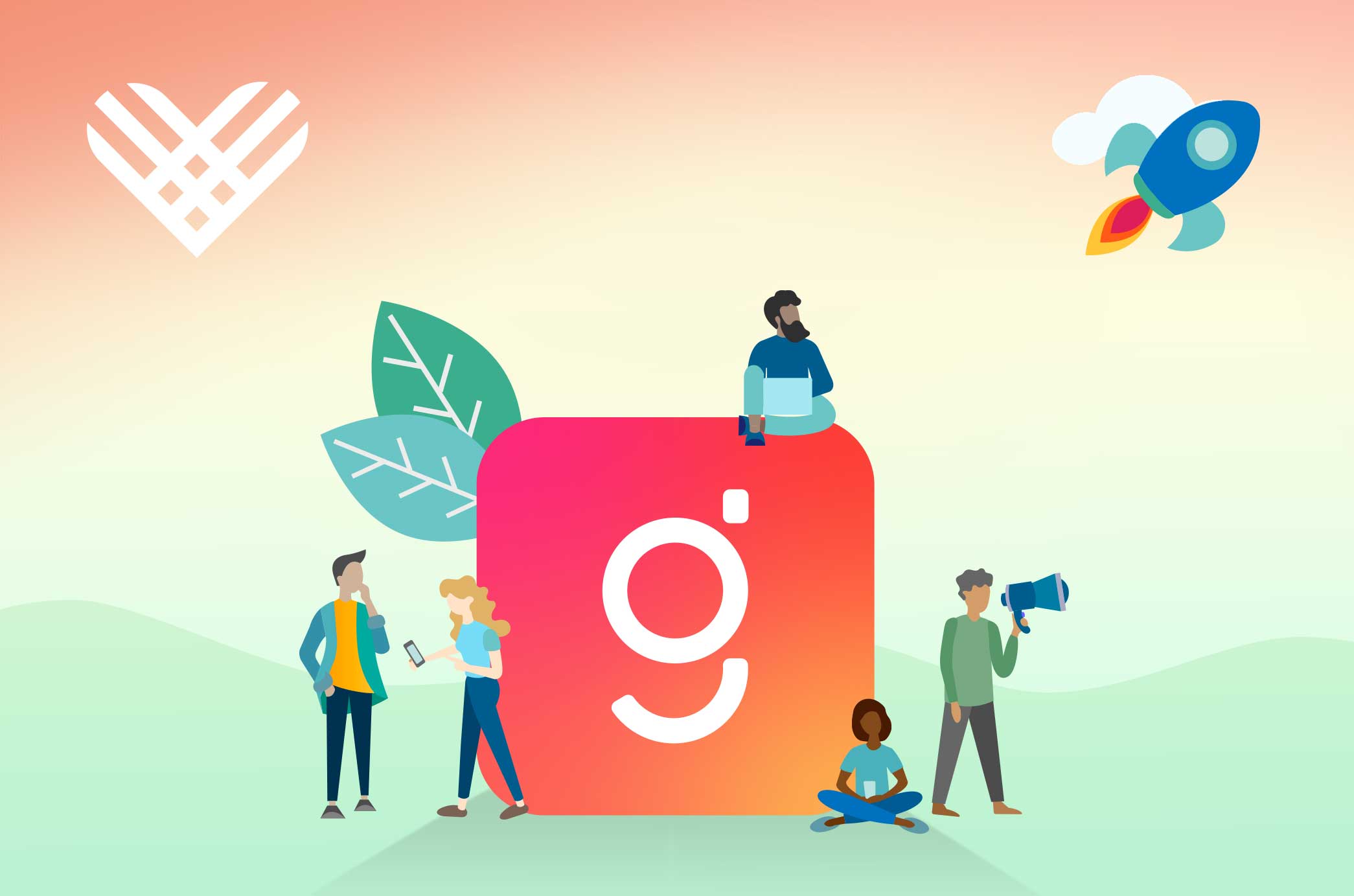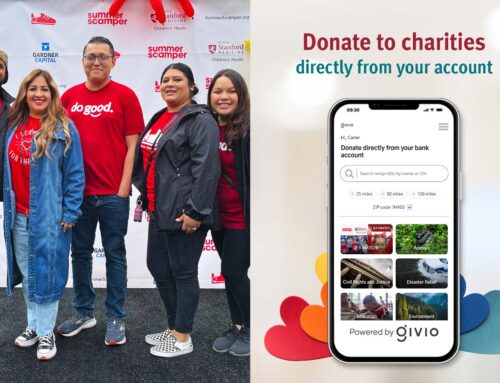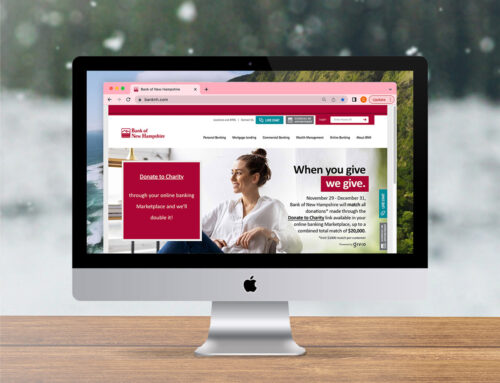1. get set up with Givio
You’ll want your Giving Tuesday campaign to get started on the right foot, so make sure you’re using a fundraising tool that allows everyone to give quickly and easily.
Some fundraising platforms (ahem, Facebook and Instagram) require givers to be a signed-in member to make a donation — excluding givers who either don’t have an account, or simply aren’t signed in. No one has time for that on Giving Tuesday. With Givio, no one gets left out. ANYONE can donate to your campaign, anywhere, without the need to sign up or sign in to anything.
2. set your Giving Tuesday goal
There are lots of reasons to run a Giving Tuesday campaign for your favorite nonprofit. Whether you have a personal connection to the cause, it’s your job, or you’re just very passionate about helping, your goal should reflect your motivation and a reasonable outcome for your efforts.
What’s a “reasonable outcome”? Well, if you know you plan on asking ten people to donate on Giving Tuesday, and each one is likely to give $10, you want to pick a goal that makes sense for those ten donors. For example, for this scenario, $200 is achievable, but also aspirational. Meaning, you and your donors may have to share the campaign with 10 MORE friends, to get there. Or dig a little deeper. You want your goal to push the boundaries, within reason.
Or maybe you’re running a workplace giving campaign with 100 co-workers. And you can expect an average donation of $75 per person. Consider setting the goal to $10,000 and encouraging your team to not just give, but to share the campaign with their family, friends and partners. You can even run a healthy Giving Tuesday competition between departments to fuel the fire and promote team-work. But more on campaign sharing in step 7.
3. determine your Giving Tuesday “ask”
People are more likely to take the action you want them to take when you ask very directly. Example: “It’s Giving Tuesday and we need your help. Please donate $10 today to feed a child.”
In this example, you’re not just asking them to give because it’s Giving Tuesday, you’re asking them to give a certain amount, today — now, to feed a child. When you remove the variables like “how much should I give? What will it go towards”, you make it easier for people to respond on the spot.
For those bigger goals, you can ask for “sponsorships”. Here’s an example: “Be a clean water community sponsor with a gift of $2,500. $2,500 pays for the pump system, installation and maintenance for a year. For $2,500 you’ll give the gift of life to an entire community.”
Keep in mind, you may have different groups of people you’re appealing to and each group may require a different “ask”. For example, if you’re a student raising funds for your local animal shelter, you’ll probably ask other students to chip in $5 or $10. But when you ask parents, aunts, uncles, neighbors or local businesses, you may ask for $25, $50 or much more.
4. write a personal appeal “why”
You’re about to ask people to donate their money in a tough economy. So you’ll want to give them a very good reason (beyond the fact that it’s Giving Tuesday) why they should skip that frappacino (or 10) and make a contribution to your campaign instead.
Write something that connects your nonprofit’s Giving Tuesday campaign to real life in a way that your donors can relate to. Facts, faces, personal connections and tangible, life-changing outcomes incorporated into your story all help.
And remember, people give for two reasons: (1) because YOU’RE appealing to them and/or (2) because they feel a connection to the cause. So be sure to give them the information they need to make a personal connection and care. Be clear about the impact their generosity will have on real lives. The more specific you can get, the easier it will be for people to envision a positive impact and be inspired to give.
5. use a compelling image
Imagery is powerful. Combined with a strong appeal it can go a long way in making that emotional connection that inspires a giver to give. You can even use the Giving Tuesday logo.
Givio’s campaign builder allows you to select any image from your phone’s photo library for your Giving Tuesday campaign cover image. But just in case you don’t already have a photo for your campaign (or the time, tools or skills to craft a custom graphic), Givio offers a library of carefully curated campaign cover images that you can choose from to keep things simple for yourself, yet effective.
If you’re one of those people that works with Canva or Photoshop to create custom graphics, you have a little more flexibility to go the extra mile to make that emotional appeal. You can select and format an image from your Nonprofit’s website or social media accounts. Many nonprofits have “press kits” with images and logos ready for you to use to help them raise funds. Or, you can find a stock image that conveys the right content and emotion for your appeal. Free resources like Unsplash and Pexels have thousands of amazing images you can use — all they ask is that you include a photo credit. Including your nonprofit’s logo is also a great idea, and or the Giving Tuesday logo, as this will help your viewers make the connection between your “ask” and the outcome of their donation.
6. identify your Giving Tuesday sphere of givers, helpers and influencers
It’s time to take a personal inventory of all the people and networks you’ve come to know throughout your life. Sometimes writing it all down helps.
Starting with those closest to you and your cause, identify all the people and organizations you have a connection to: family, friends, neighbors, classmates, faith-based groups, teammates, co-workers, colleagues, partners, customers, associates, social media friends and followers, etc. You may be surprised just how big your list gets.
Next, think about how you communicate and mingle with these people and groups? Different groups of people tend have different communication preferences, and you’ll want to consider using all of them: phone, text, email, IM, website(s), Slack, Teams, Skype, social media, live and virtual events, etc.
And last, but definitely not least, ask yourself if any of your connections are “influencers” — people or organizations with a large and engaged following that can help you raise awareness of your campaign. Ask them to share your Giving Tuesday campaign with their networks. Influencers can help you dramatically widen your circle. Bottom line: the more people engaged in giving and helping, the better your results will be.
You’ve taken all the steps so far to create a compelling campaign. You’ve identified your potential givers. Now its time to share the campaign and make the ask.
Remember when earlier in this guide we mentioned the most successful campaigns became successful because they used a variety of methods to communicate about the campaign? Well, it’s worth repeating.
Starting a couple weeks before Giving Tuesday, you’ll want to promote your campaign. Wherever you digitally “go”, your Giving Tuesday campaign should go too. Think of it as a little buddy that never leaves your digital side — either as a link to your campaign, or with a generated QR code people can scan. Here are some examples of where we like to share our campaigns.
website(s)
virtual events
newsletters
Slack
Teams
Skype
text
Vimeo
YouTube
Snapchat
8. share again. and again. (and again)
Sometimes you need to ask more than once. So make a plan, timed to start before Giving Tuesday campaign, for a first, second, and final “ask”.
How often have you seen something that caught your interest, but you were busy and thought “I’ll get back to that later” (but then you forgot). It’s human nature. So keep that in mind when reaching out. Give your contacts some advance notice that you’re raising funds for Giving Tuesday and that you’re asking for their contribution. A good idea is to send out or post the notice two weeks before, one week before and then on Giving Tuesday itself. You can ask at the beginning of the day, and then again as the day draws to close, with urgency to hit your goal. Just remember, there’s a fine line between helpful reminders and pestering. Be respectful of your potential donors.
Remember too that urgency can help people to act. Example: “We’re just $500 short with a few hours left to go in our campaign. 25 dogs and cats left homeless after fire ravaged their communities are waiting for our help. Your kind gift of $25, now, will help make our mission a reality.”
Real deadlines can prompt people to put aside whatever else they were doing and make the gift.
9. express gratitude
Give something back to your givers — a message of appreciation and positive impact.
People give because it makes them feel good to help. Your messages of appreciation can go a long way in strengthening an already positive experience for you and your Giving Tuesday donors. And when the time comes again to raise funds for another worthy goal, they’ll be more likely to respond to your appeals.
10. remember, your efforts make a real difference
Fundraising for a worthy cause is an act that combines hope with determination. It’s because of people like you, dedicated to making positive change, that makes our world a better place. So thank you for being you. We wish you the best of luck for your Giving Tuesday campaign. Now, go forth and make fundraise!
— Your friends at Givio





